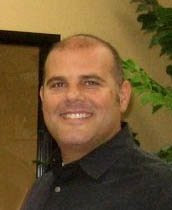
I had the word stupid quoted at me twice this week. Now, I was not being called stupid…at least I don’t think so. The first mention came from a mentor/sage type of guy whom I have the good fortune to rub shoulders with occasionally. Often when I speak with him he will share what he calls a “mantra”- kind of a sacred counsel/last thought to make me think. This week he left me with this gem, “You can’t teach stupid.” Of course the first thing my mind went to was the classic line from Forrest Gump. “Momma says, ‘Stupid is as stupid does’.” The deceptive simplicity of this quote hides a deeper wisdom. We can call somebody stupid, but that doesn’t make it true. Stupid is defined by our actions.
But what to do with the idea that you can’t teach a stupid person? I’m stumped with that one. I shared it with a friend and his response was the famous John Wayne saying, “Life is tough, but it's tougher when you're stupid.” Now that I can relate to! When you make a stupid move, fine, just don’t compound it by doing something stupid to follow it up. You know like you drink too much, and you decide to drive home anyway. Stupid followed up by stupider! Or you blow it with an employee, family member, or friend and instead of fixing things you go for the kill to try and save face. Either way there is usually a way to rebound from a stupid act of some kind, but this still leaves me with “you can’t teach stupid.” Well, does this mean you can’t tell someone how to be stupid, and they just come by it naturally? Or does it mean you can’t teach a person who is just plain old stupid? Either way I struggle with this one. I found a photo (http://cakewrecks.blogspot.com/2008/05/cake-that-started-it-all.html) that brought me some clarity. Here's how I imagine the conversation to order the cake took place:
Bakery Employee: Thanks for calling *******. How may I help you?
Customer: I would like to order a cake for a going away party this week.
Bakery Employee: What you want it to say on the cake?
Customer: “Best Wishes Suzanne” and underneath that “We will Miss You”. (Read the cake again.)

After thinking about this for a few days, I think this cake represents exactly what my wise old friend wanted me to think about. Stupid just happens. He just wanted me to consider that you can’t take stupid out of the equation when you live on our planet, and often enough we’re a part of the stupid. The question is, “What do you do with stupid when it happens?” Let’s look again at those first two quotes. First, Forrest laid it out for us. It is what it is. Secondly, The Duke gives some great insight on what life will be like if we make choices that just exacerbate the situation we’re in. Let me leave you with one final thought. What around you just has to be left for what it is and what around you needs to be redirected in order to not compound the stupidity?








